One of the most popular inspections in recent years to appear on the local municipal inspector’s daily list is the inspection of spas or hot tubs in the residential setting. Often the dwelling occupant or homeowner has installed the spa or hot tub. This combination of the well-meaning homeowner and the spa or hot tub installation can frequently result in some dangerous situations as far as the electrical requirements are concerned. Maintaining electrical safety and the importance of electrical permits and inspections in these situations cannot be overemphasized. This would apply to the do-it-yourselfers as well as the most seasoned veteran electrician.
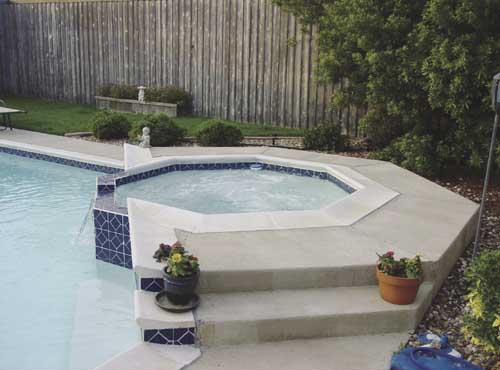
Photo 1. Built-in spa
Types
What is the difference between a spa or a hot tub? The term hot tub generally refers to the wooden, barrel-shaped tubs, which became popular in the late 1960s. Early hot tubs were fairly simple devices, which basically held hot water and had enough room for one or two bathers at a time. When the industry began building tubs of molded fiberglass or with thermoplastic shells, they were given the tag spa to differentiate the term from their wooden cousins. Even the wooden hot tub has evolved over time to include such amenities as seating, jets, filters and most of the features associated with the more modern spas.
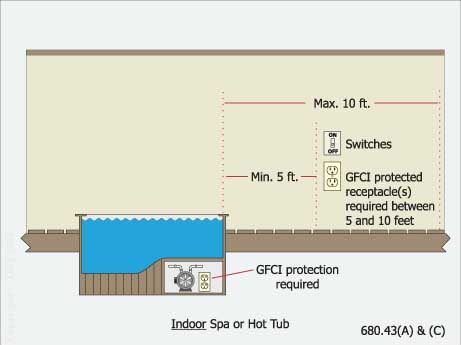
Figure 1. 680.43 Indoor pools, spas and hot tubs, receptacles and switches
Spas or hot tubs come in many different shapes and forms. Just like a full-size swimming pool, spas or hot tubs can be constructed permanently on the premises, either indoors or outdoors. These built-on-site type spas or hot tubs constructed outdoors generally would be subject to the same rules of Article 680 which would apply to swimming pools. Oftentimes, they are constructed as an integral part of the swimming pool itself.
Spas or hot tubs bought as a unit and transported to the residence can be classified as either a self-contained unit or packaged assembly. Both the self-contained and packaged units are factory fabricated units consisting of a spa or hot tub vessel with water circulating, heating, and control equipment. With the self-contained unit, equipment is integral to the unit, where the packaged unit has its equipment mounted on a common base. Portable units are also available which can be easily moved from one place to another and typically emptied after each use.
Wiring and Protection
Generally, outdoor spas and hot tubs are required to meet the same electrical code provisions as a swimming pool installed outdoors. For a single-family dwelling, an indoor or outdoor self-contained or packaged spa or hot tub assembly may utilize any of the wiring methods found in Chapter 3 of the NEC that contain a copper equipment grounding conductor sized at a minimum of 12 AWG or larger.
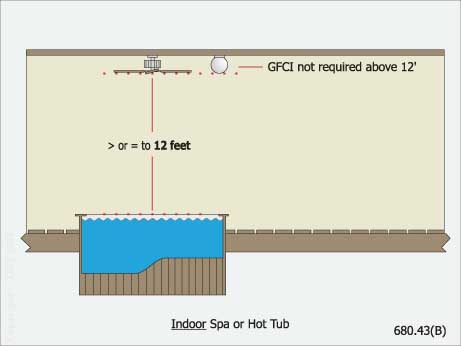
Figure 2. 680.43 Indoor pools, spas and hot tubs, luminaires and ceiling fans
Ground-fault circuit interrupter (GFCI) protection is required to be provided for associated items such as receptacles, luminaires (lighting fixtures), and motors associated with spas or hot tubs. All 125-volt receptacles located within 6.0 m (20 ft) of the inside walls of an outdoor spa or hot tub are required to be provided with GFCI protection. For indoor locations, all 125-volt receptacles rated 30 amperes or less and located within 3.0 m (10 ft) of the inside walls of the spa or hot tub must be GFCI-protected. All single-phase, 15- and 20-ampere, 120- through 240-volt receptacles that supply outdoor spa or hot tub pump motors are required to have GFCI protection as well. It should be noted that these GFCI requirements apply to these motor-related receptacles regardless of their proximity to the spa or hot tub and only apply to cord-and-plug-connected pump motors. For indoor or outdoor spas or hot tubs, receptacles that provide power for a self-contained or packaged spa or hot tub shall be GFCI-protected unless the unit is a listed package unit with integral GFCI protection. Cord-and-plug connections with a cord not longer than 4.6 m (15 ft) can be utilized where protected by a ground-fault circuit interrupter.
Luminaires (lighting fixtures), lighting outlets and ceiling fans that are placed within 1.5 m (5 ft) and less than 3 m (10 ft) horizontally from an outdoor spa or hot tub must be GFCI-protected unless they are installed more than 1.5 m (5 ft) above the maximum water level and rigidly attached to the building structure. Existing luminaires on the structure, which are located within 1.5 m (5 ft) horizontally of the spa or hot tub are permitted to remain if they are rigidly attached to the building structure and GFCI-protected. In no case can an existing or newly installed luminaire be located within 1.5 m (5 ft) vertically above the maximum water level. For an indoor spa or hot tub, luminaires and ceiling fans located less than 3.7 m (12 ft) above the spa or hot tub and within 1.5 m (5 ft) horizontally must be GFCI-protected.

Figure 3. 680.43 Indoor pools, spas and hot tubs, luminaires and ceiling fans
Luminaires and ceiling fans must be located 3.7 (12 ft) above the maximum water level and 1.5 m (5 ft) horizontally from the outdoor spa or hot tub unless the luminaire meets the GFCI requirements described in NEC Section 680.22(B)(3) and (4). Luminaires and ceiling fans serving indoor spas or hot tubs cannot be located less than 3.7 m (12 ft) vertically and 1.5 m (5 ft) horizontally unless GFCI-protected. Generally, luminaires and ceiling fans cannot be located within 2.3 m (7 ½ ft) above the water level of an indoor spa or hot tub with the exception of a surface-mounted or recessed luminaire with a glass or plastic lens or globe, nonmetallic or electrically isolated metal body or trim, and suitable for use in damp locations. If an underwater luminaire is employed, the rules pertaining to a permanently installed swimming pool shall apply and the provisions of Part I and II of Article 680 would be applicable.
For an outdoor spa or hot tub at a dwelling unit, at least one 125-volt 15- or 20-ampere receptacle shall be located not less than 3.0 m (10 ft) from the inside wall of the spa or hot tub. The maximum this required receptacle can be located away from the outdoor spa or hot tub is 6.0 m (20 ft) from the inside wall of the spa or hot tub. To serve as this required receptacle, it cannot be located more than 2.0 m (6 ft 6 in.) above grade level of the spa or hot tub location. The NEC does allow for a receptacle within this 3.0 m (10 ft) space in a restricted space at a dwelling. This would apply when space limitations of the lot prohibit the spa or hot tub from being located more than 3.0 m (10 ft) from the structure and the required receptacle cannot be physically located outside the required 3.0 m (10 ft) space. In this case, one receptacle could be located no closer than 1.5 m (5 ft) measured horizontally from the inside wall of the spa or hot tub. Spas and hot tubs, generally do not take up a lot of space, so, this restricted space allowance usually applies to built-in swimming pools and not spas or hot tubs. It would be up to the authority having jurisdiction (AHJ) to determine if the lot or yard presented a restricted space. Receptacles can be located within 3.0 m (10 ft) of an indoor spa or hot tub but cannot be located within 1.5 m (5 ft) of the tub or spa. At least one 125-volt, 15- or 20-ampere receptacle shall be located within this 1.5 m (5 ft) – 3.0 m (10 ft) area from the inside wall of the spa or hot tub. See Photo 1
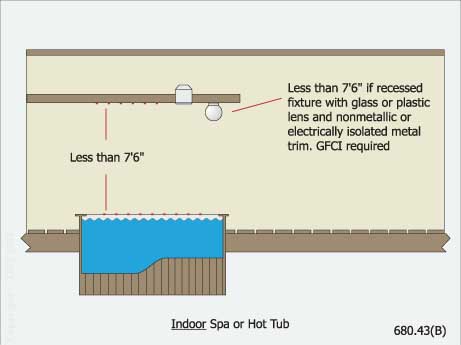
Figure 4. 680.43 Indoor pools, spas and hot tubs, luminaires
Switching devices for outdoor spas or hot tubs are required to be located at least 1.5 m (5 ft) horizontally from the inside walls of the spa or hot tub unless separated from the spa or hot tub by a solid fence, wall, or other permanent barrier. A switch that is listed as being acceptable for use within 1.5 m (5 ft) of the outdoor spa or hot tub shall be permitted. For the indoor installation, switches must be located at least 1.5 m (5 ft), measured horizontally, from the inside walls of the spa or hot tub without mention of the permanent barriers as required at the outdoor location. While this article deals primarily with the residential provisions of spas and hot tubs, keep in mind that a disconnecting means for spas and hot tubs that is capable of being used in an emergency must be provided at other than single-family dwelling units. This emergency shutoff switch must be installed within sight from and at least 1.5 m (5 ft) from the spa or hot tub and must be clearly labeled “Emergency Shutoff.”
Bonding and Grounding
Metal parts associated with or in the vicinity of an outdoor spa or hot tub must be bonded together. All metal parts within 1.5 m (5 ft) horizontally and 3.7 m (12 ft) vertically must be bonded together. The bonding at the outdoor spa or hot tub applies to both electrical and nonelectrical equipment and is intended to eliminate potential voltage differences between distinct or various conductive parts of a spa or hot tub. The bonding grid and the 8 AWG bonding conductor’s function is to eliminate the voltage gradient in the pool area. The bonding grid is not required to provide a path for fault current that may occur as a result of electrical fault or equipment failure. Metal components that employ direct metal-to-metal contact on the same metal frame are an acceptable bonding method. Bonding in this case is not necessarily the same requirements as for equipment grounding. The 8 AWG bonding conductor is not required to extend from the bonding grid to the panelboard or other grounding point of the electrical system.
The bonding grid may be comprised of the steel reinforcing of the concrete spa structure, the bolted metal parts of a wall or welded metal parts of a spa or hot tub or brass or other corrosion-resistant conduit. One or more 8 AWG or larger solid copper conductor(s) can satisfy this bonding grid requirement as well. Connections to the bonding grid may be made by exothermic welding or by stainless steel, copper, brass, or copper alloy pressure connectors or clamps that are listed and labeled as suitable for the location. The corrosive and wet environment in the vicinity of a spa or hot tub, due to chemically treated water, may cause rapid deterioration of connections made with devices that are not specifically listed for this application. A solid copper conductor is required here as well, rather than a stranded conductor due to corrosive influences that might adversely impact stranded conductors.
Some of the equipment that is required to be bonded to the grid is also required to be grounded. Although the bonding requirements apply to all types of metal equipment, the equipment grounding requirement applies only to electrical equipment such as pump motors. The self-contained or packaged spa or hot tubs are generally just that, self-contained, and therefore come from the factory with all the metal parts already bonded together within the assembly. Once the branch-circuit equipment grounding conductor is connected to these self-contained units, both bonding and grounding requirements have been satisfied.
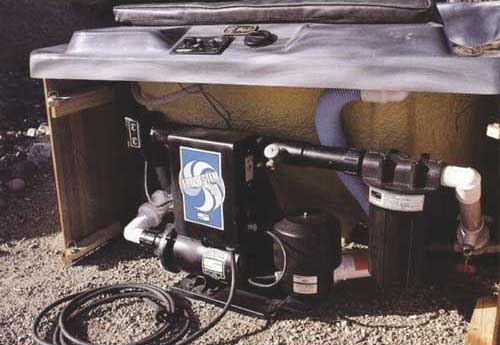
Photo 2. Self-contained spa motor and cord
Bonding rules are somewhat reduced, as compared to swimming pools and outdoor spas or hot tubs, for indoor spas and hot tubs. The outdoor vertical distances within which metal parts are required to be bonded of 3.7 m (12 ft) are eliminated and apply only to 1.5 m (5 ft) in all directions for an indoor spa or hot tub. As with outdoor spas or hot tubs, all electric equipment and fittings associated with an indoor spa or hot tub must be bonded together. Separate insulated equipment grounding conductors are not necessarily required, where the wiring method serves as the grounding conductor as well.
Application of the NEC
When dealing with spas or hot tubs, keep in mind that the requirements found in Chapter 6 of the NEC amend or supplement the previous Chapters 1–4. In most cases with spas and hot tubs, the rules and requirements found in Article 680 are more restrictive than those rules found in Chapters 1–4. Where wiring methods are concerned, for instance, unless specific rules are stated for that particular wiring method in Article 680, the rules for that wiring method found in Chapter 3 would apply. This article is based on the minimum requirements of the NEC that apply to spas and hot tubs. It is important to following any local regulations or codes that might also be applicable in your particular area.













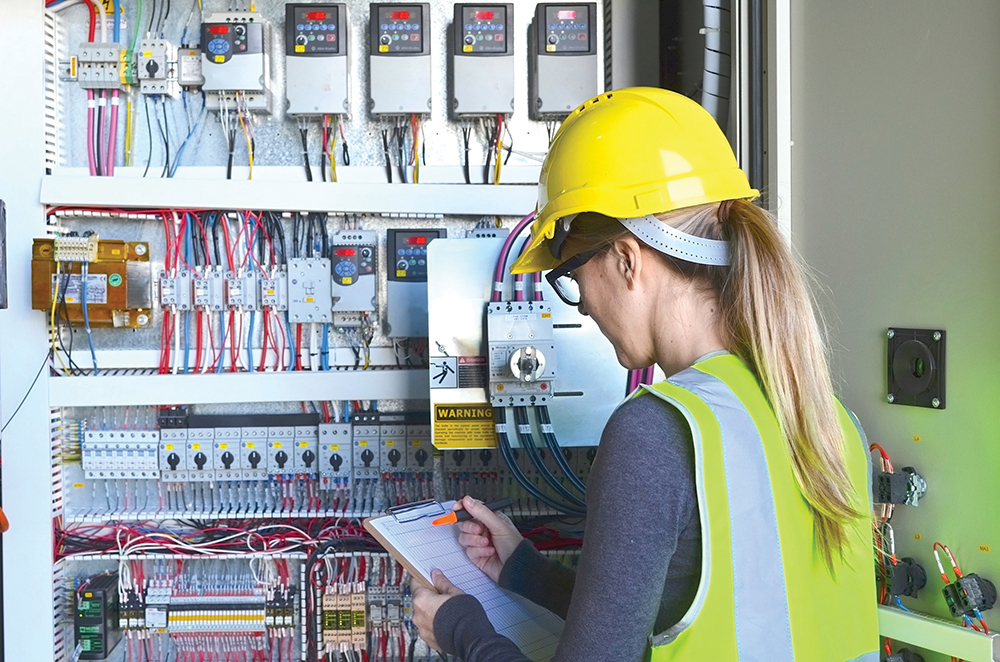
Find Us on Socials